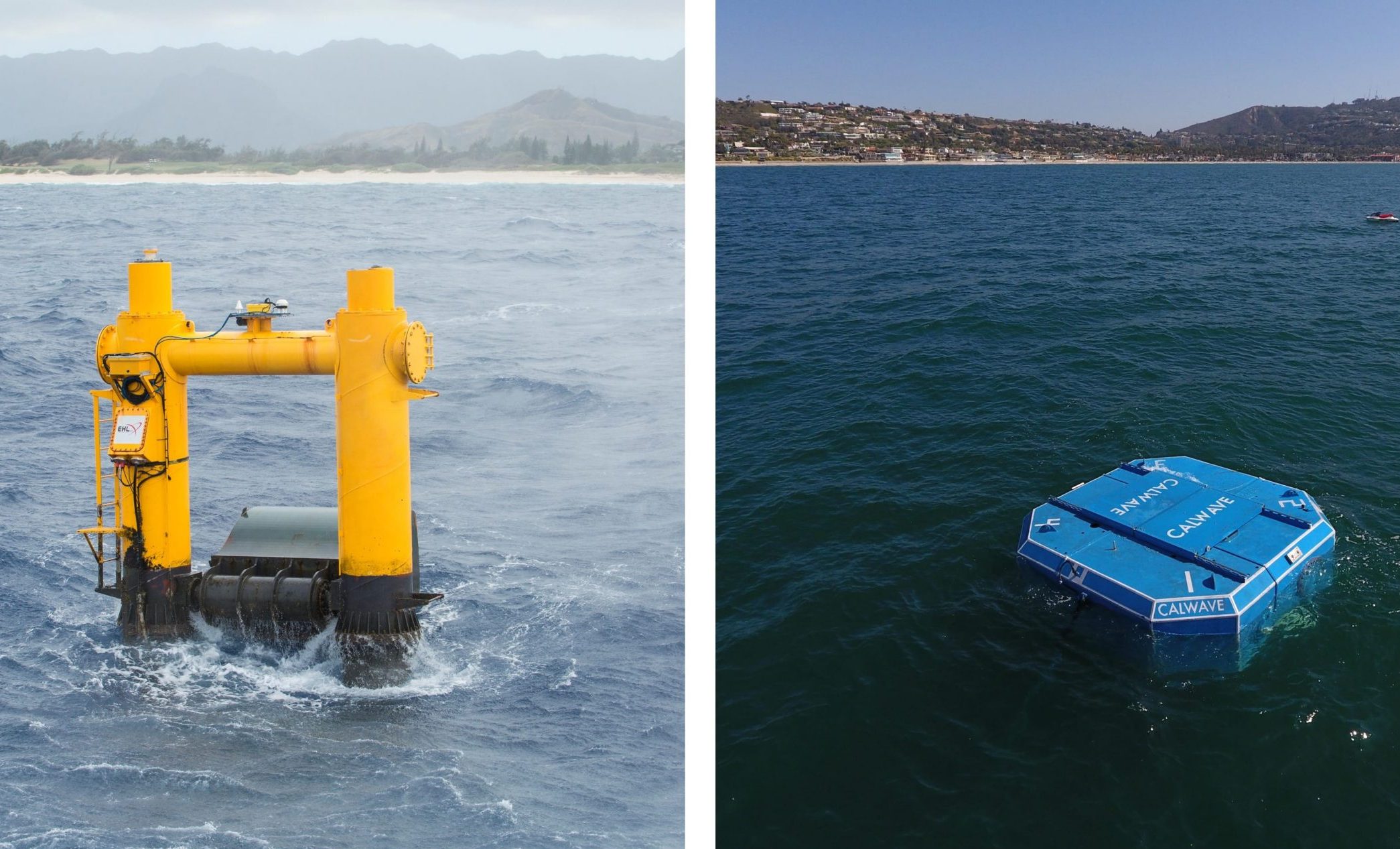First step towards powering French Polynesia with wave energy

28.03.2024
Ys (project developer), Azura Wave Power and CalWave (the two technology developers) have signed a tripartite Memorandum of Understanding to launch two wave energy demonstrators in Tahiti. The objective is to prove that it is possible to produce carbon-free electricity thanks to the force of Polynesian waves and make French Polynesia more energy self-sufficient.
Energy self-sufficiency is paramount for island territories
French Polynesia is an archipelago of 118 islands on an area as large as the Europe. Approximately 64 %* of the electricity used comes from imported fossil fuels. Shipping generates high level of pollution and significantly increases costs. « Some faraway islands are supplied only few times a year and the cost of electricity production can reach up to 1000€ per MWh », says Corinne DUBOIS, president of Ys.
The development of renewable energies is essential to stabilize costs and make the territory more energy self-sufficient and resilient. Wave energy could offer a new perspective in the energy transition in these isolated territories.
2 technology developers retained on the 11 applications
Born from an idea of the University of French Polynesia, at the end of 2021, the TWEC (Tahiti Wave Energy Challenge) project was selected and presented at the Blue Climate Summit in May 2022.
Its form evolved since then and the new demonstrator project has been taken over by Ys Energies Marines Developpement to carry it out until its completion in co-construction with the local population.
The objective of the demonstrators is to prove in real conditions that it is possible to produce electricity from wave energy to collect initial feedback from its inhabitants and on the particular context of the territory. In the summer of 2022, Ys launched a Call for Expressions of Interest to international wave technology developers.
« We received 11 applications », explains Bruno LEMORT, Technical and Operations Director at Ys Energies Marines Developpement. This was followed by a pre-selection process through workshops with the builders: « we had to ensure that the technologies were adapted to the approached areas to carry out this first installation.”
Indeed, with more than a hundred wave energy developers worldwide and almost as many technologies, it was necessary to verify the compatibility of technologies with the Polynesian environment: depth, inclination, typology of the seabed (volcanic rock, corals), distance to the coast.
Following these exchanges, Azura Wave Power and CalWave were definitively selected to deploy their wave production unit.
About CalWave
CalWave is a California-based wave energy technology OEM. CalWave demonstrated its system offshore San Diego, CA from September 2021 to July 2022 and is contracted by the US DOE to deploy a utility grid-connected system at the 20 MW PacWave test site off the central Oregon coast.
The company plans to offer its solution with isolated coastal communities around the world to lower energy costs, build energy independence, and unlock the ability to achieve a fully clean power supply.
About Azura Wave Power
New-Zealand based Azura Wave Power have developed the Azura Ocean Wave Converter technology for converting the endless supply of ocean wave into electricity and potable water. The Azura device has previously undertaken a number of deployments in New Zealand, at the PAC Wave test facility off the coast of Oregon USA and most recently an 18-month grid connected trial at US Navy’s Wave Energy Test Site (WETS) in Hawaii.
Government and local stakeholders support the TWEC project
“The new TWEC will be a true live demonstration that will highlight the untapped potential of the force of the waves in this area of the world. The results could develop a local energy, sized to the needs of the territory and generating jobs linked to the ocean. One more step towards the self-sufficiency in Polynesia”, explains Corinne DUBOIS.
The final site of this demonstration will be decided in consultation with the various potential municipalities studied by Ys.
After this demonstration, the site can be used for training purposes for future local wave energy operators.
The Polynesian Government has given its support to the project. In a letter addressed to Ys, Tevaiti-Ariipaea POMARE, Minister for the Economy, Budget and Finance, in charge of energy, encourages the initiative “likely to contribute to the development of renewable energies in Polynesia”.
Mauna REVEIL, project manager in charge of French Polynesia and based in Tahiti, is already studying the pre-feasibility of wave energy installations in the five archipelagos of French Polynesia.
